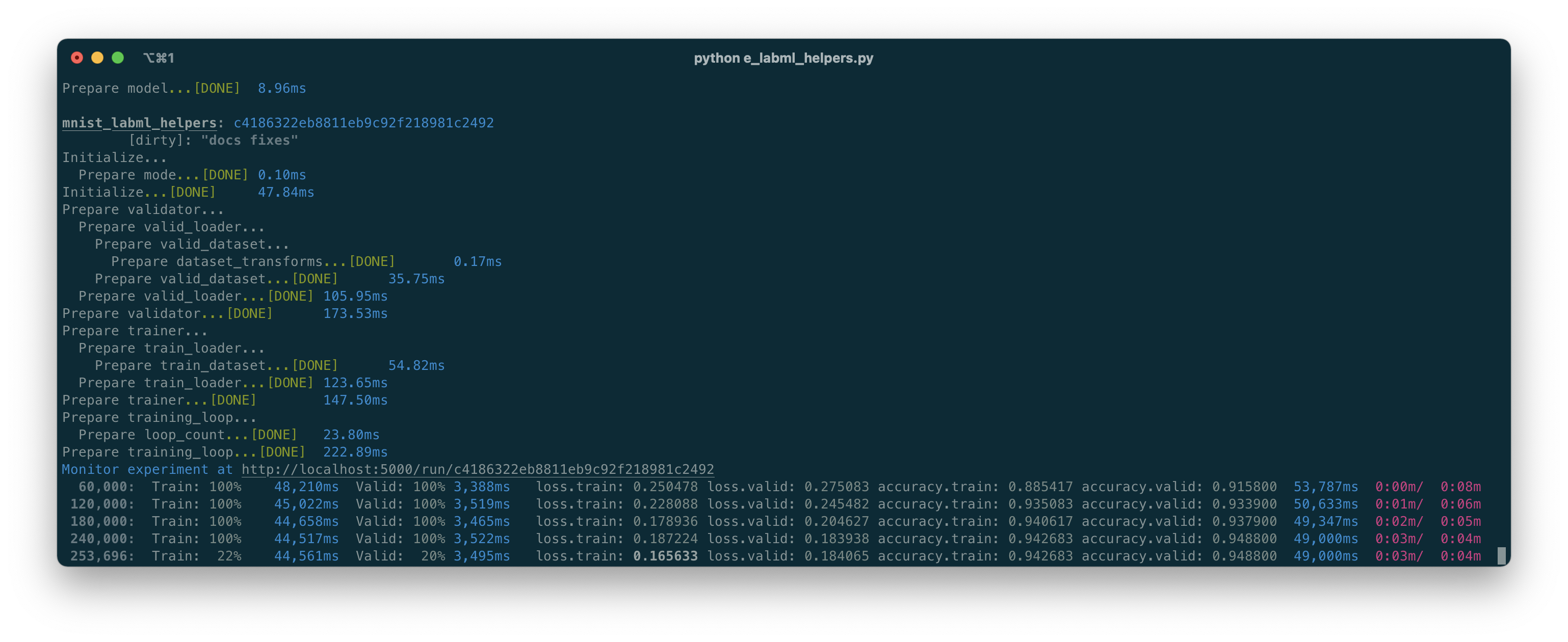- Monitor running experiments from mobile phone or laptop
- Monitor hardware usage on any computer with a single command
- Integrate with just 2 lines of code (see examples below)
- Keeps track of experiments including infomation like git commit, configurations and hyper-parameters
- API for custom visualizations
- Pretty logs of training progress
- Open source!
To install MongoDB, refer to the official
documentation here.
Install the package using pip:
pip install labml-app# Start the server on the default port (5005)
labml app-server
# To start the server on a different port, use the following command
labml app-server --port PORTOptional: to setup and configure Nginx in your server, please refer to this.
You can access the user interface either by visiting http://localhost:{port} or, if configured on a separate machine,
by navigating to http://{server-ip}:{port}.
- Install the package using pip.
pip install labml- Create a file named
.labml.yamlat the top level of your project folder, and add the following line to the file:
app_url: http://localhost:{port}/api/v1/default
# If you are setting up the project on a different machine, include the following line instead,
app_url: http://{server-ip}:{port}/api/v1/defaultfrom labml import tracker, experiment
with experiment.record(name='sample', exp_conf=conf):
for i in range(50):
loss, accuracy = train()
tracker.save(i, {'loss': loss, 'accuracy': accuracy})from labml import tracker, experiment
uuid = experiment.generate_uuid() # make sure to sync this in every machine
experiment.create(uuid=uuid,
name='distributed training sample',
distributed_rank=0,
distributed_world_size=8,
)
with experiment.start():
for i in range(50):
loss, accuracy = train()
tracker.save(i, {'loss': loss, 'accuracy': accuracy})- API to create experiments
- Track training metrics
- Monitored training loop and other iterators
- API for custom visualizations
- Configurations management API
- Logger for stylized logging
# Install packages and dependencies
pip install labml psutil py3nvml
# Start monitoring
labml monitorIf you use LabML for academic research, please cite the library using the following BibTeX entry.
@misc{labml,
author = {Varuna Jayasiri, Nipun Wijerathne, Adithya Narasinghe, Lakshith Nishshanke},
title = {labml.ai: A library to organize machine learning experiments},
year = {2020},
url = {https://labml.ai/},
}




